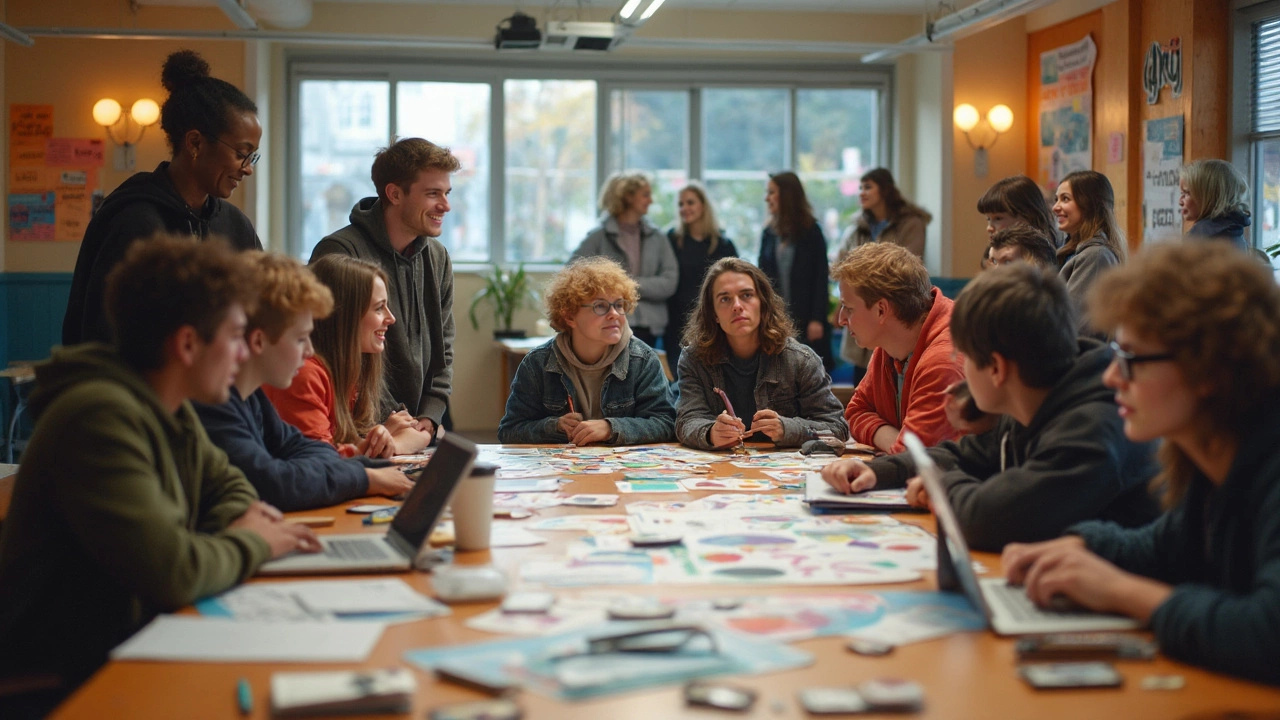How to Jump Into a Youth Initiative and Make a Real Difference
If you’re a teen or a parent looking for ways to get involved, a youth initiative is a great first step. It’s basically a small project run by young people for the community. Think of it as a club, a clean‑up day, a tutoring group, or an art mural that brings neighbours together. The best part? You don’t need a big budget or a fancy office – just an idea, a few volunteers, and a bit of planning.
Why Youth Initiatives Matter
Young people bring fresh energy to local issues. When teens organize a food‑bank drive, they often reach other teens who might not hear about it in traditional channels. That extra reach can double the impact of a single event. Plus, running a project teaches leadership, communication, and problem‑solving – skills that look great on a CV or university application. Communities also benefit: safer streets, greener parks, and stronger friendships form when youths take charge.
Steps to Launch Your Own Initiative
1. Spot a need. Walk around your neighbourhood or talk to friends. Is there a park that needs a clean‑up? A school that could use a peer‑tutoring program? Write down the problem in one clear sentence.
2. Gather a core team. Aim for 3‑5 reliable people who share your passion. Mix skills – someone good at social media, another who can handle logistics, and a creative mind for ideas.
3. Set a simple goal. Instead of “help the community,” try “collect 200 books for the local library in two weeks.” A concrete target makes planning easier and shows progress.
4. Plan the basics. Choose a date, a location, and a list of tasks. Break the big goal into small steps: advertise, gather supplies, execute, and wrap up.
5. Promote locally. Use school notice boards, community WhatsApp groups, and a short flyer. Keep the message short: what, when, where, and why it matters.
6. Run the event. Arrive early, assign roles, and keep the vibe upbeat. A quick check‑in at the start helps everyone know what to do.
7. Show the results. Take photos, count what you collected, and thank volunteers. Posting a short recap on social media encourages more people to join next time.
8. Reflect and improve. Ask the team what went well and what could be better. Use that feedback for the next project.
Remember, the first initiative doesn’t have to be huge. A weekend litter‑pick or a one‑off bake sale can spark bigger ideas later. When you see the impact, you’ll likely want to do more.
Looking for inspiration? Check out local youth clubs, school newsletters, and community centres. Many already have templates for events like "Youth Clean‑Up Day" or "Teen Tech Workshops." You can adapt those plans to fit your neighbourhood.
Don’t let perfection hold you back. Starting small, learning fast, and staying consistent beats waiting for a flawless plan that never happens. The community will notice your effort, and other young people will follow your lead.
So, what’s the next step for you? Grab a notebook, jot down a problem you see, and text a friend who might help. In a few weeks you could be running a project that makes your town a better place – and you’ll have a story to tell for years to come.

Best Youth Initiative: What Actually Works for Young People?
Not all youth initiatives are created equal. This article breaks down what really makes a youth initiative stand out and why some programs have a lasting impact while others fall flat. Get tips for spotting the most effective initiatives and see how smart youth organizations set young people up for real success. The article shares practical examples, data-driven insights, and actionable advice for young people, parents, and community leaders. No fluff—just the real essentials about what works best.